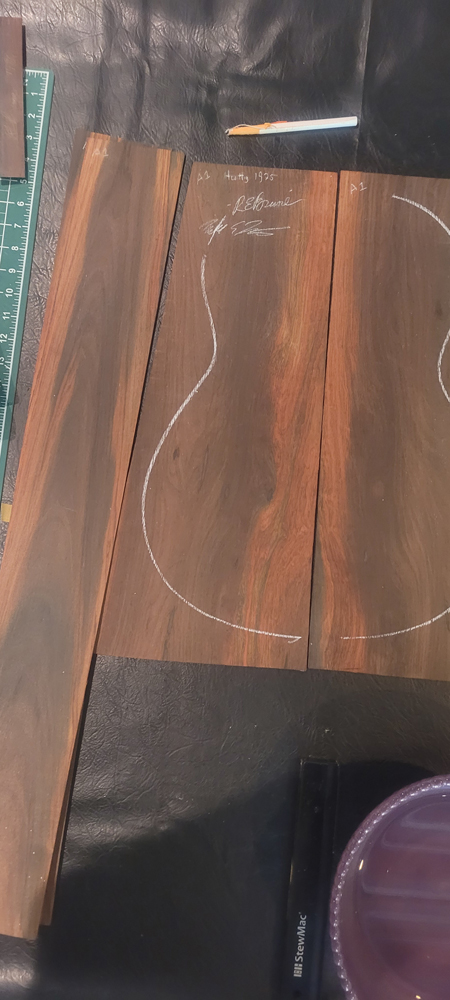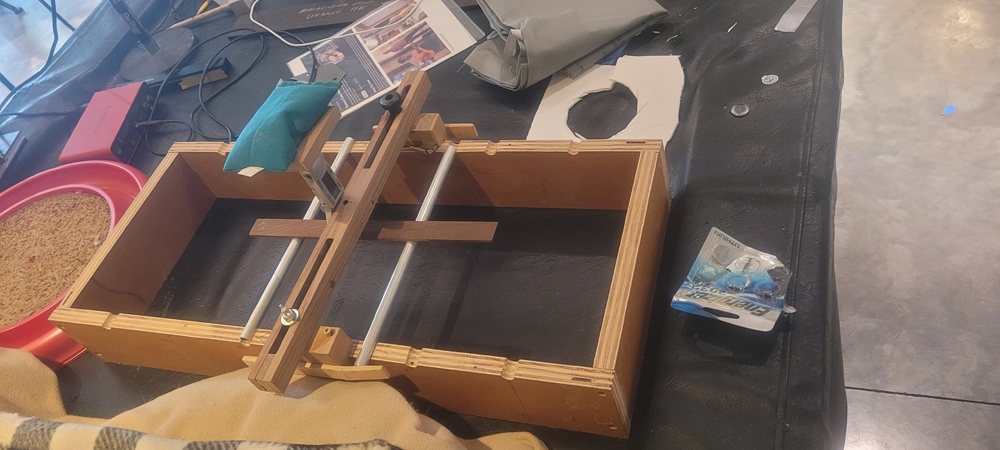Starting a new BRW falcate braced falcate classical guitar
Posted: Thu Aug 24, 2023 12:05 am
R. E. Bruné donated a Brazilian Rosewood guitar kit to the Guild of American Luthier conference for their auction. It included the rosewood set pictured a top set, a finished neck and wood for a fretboard and bridge. The kit was not going for as much as I thought it should so I bought it. The neck was 660 mm (not 650) so I put it aside and I had a sonically graded Pacific Rim Tonewoods Lutz top (also bought at the GAL) that I wanted to use.

First steps for me is to test the wood to determine a target thickness. I have 2 methods. The first method uses tap frequencies to determine the Young's modulus (stiffness). This method works great but it requires that plate tested is rectangular and uniform thickness. The top plates I had allowed me to do this test. It is easier to show rather than tell so here is a video of me testing the top plate.
The back plates were more trapezoidal so I determined the long and cross grain Young's modules using rectangular pieces from the area outside the profile of the guitar by performing a deflection test.


First steps for me is to test the wood to determine a target thickness. I have 2 methods. The first method uses tap frequencies to determine the Young's modulus (stiffness). This method works great but it requires that plate tested is rectangular and uniform thickness. The top plates I had allowed me to do this test. It is easier to show rather than tell so here is a video of me testing the top plate.
The back plates were more trapezoidal so I determined the long and cross grain Young's modules using rectangular pieces from the area outside the profile of the guitar by performing a deflection test.














